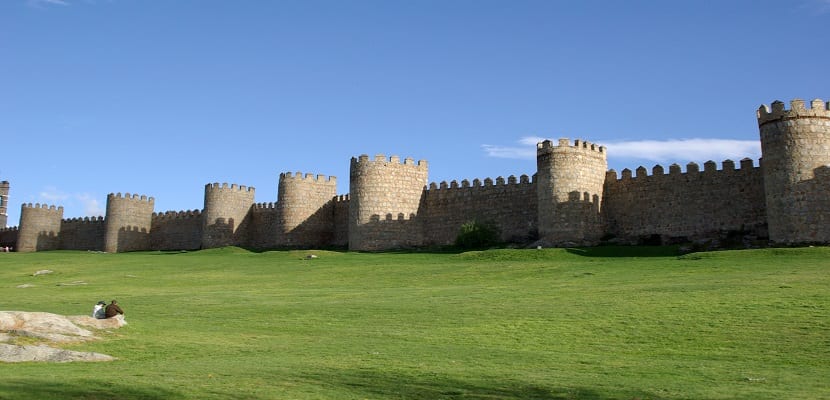
Image | Wikipedia
The medieval walls of Ávila are the emblem of this long-lived Castilian-Leonese city. In Spain, most of them were raised at the time of the Reconquest, when it was necessary to defend against the enemy's incursions and once concluded, the passage of time and events caused many to fall into ruins and others, fortunately, managed to be preserved become a tourist attraction today.
However, Ávila is much more than its walls. The cathedral, the Royal Monastery of Santo Tomás, the Museum of Santa Teresa, the church of San Pedro ... This city located an hour and a half from Madrid is perfect for a getaway and soak up history and culture. It was declared a World Heritage Site in 1985 by Unesco. Next, we take a tour to find out what to see in Ávila in one day during a very brief getaway.
Like its walls, the roots of this city lie at the end of the XNUMXth century, during the Reconquest. However, its heyday was lived in the XNUMXth century when Saint Teresa of Jesus turned it into a mystical destination and very important spiritual in Spain. Let's go, step by step, knowing some of the most important corners of Ávila.
The walls
The setting in which the walls of Ávila are built is medieval and its appearance remains more or less unaltered from that time. They have a perimeter of about 2,5 kilometers with more than 80 semicircular crenellated towers and 9 main gates, including the arched El Alcázar, in the east.
Admiring them from below is an incredible sensation but it is also possible to look at the horizon above them and feel like an ancient warrior, since there are long sections that can be covered on foot.
We do not know the details of its construction about the walls of Ávila, nor do we know the names of the people who participated in it, although it is thought that Christians and Mudejars probably worked.
The walls are in a good state of conservation, but for this, various maintenance tasks were necessary that have occurred periodically since their construction and in recent times in order to make a tourist use possible. The walls of Ávila can be accessed from three different points: the first is the Casa de las Carnicería (next to the apse of the cathedral), the second is the Puerta del Alcázar and the third is the Puerta del Puente (accessible section) complementing each other with a fourth starting point at Puerta del Carmen.
Access to the walls of Ávila has a price of 5 euros for general admission and 3,5 euros for children. However, the visit is free on Tuesdays.
Avila Cathedral
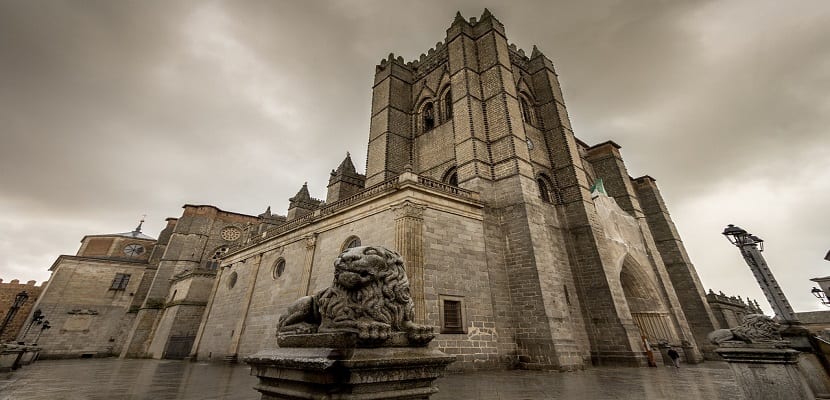
Image | Pixabay
It is considered the first Gothic cathedral in Spain, which was built on the remains of a previous temple following a temple-fortress style, its apse being one of the cubes of the city walls.
It began to rise in Romanesque style around the XNUMXth century but with the passage of time it became a Gothic style, ending up being completed around the XNUMXth century. Avila Cathedral has a Latin cross plan formed by three naves, a transept and a semicircular chevet with chapels between the buttresses.
Inside there is an impressive altarpiece made by Vasco de la Zarza on the altar of the main chapel that has paintings by Juan de Borgoña and Pedro de Berruguete with scenes from the life of Christ. The sacristy and the cloister belong to the XNUMXth century and are in the Gothic style.
On the altar of the main chapel there is a magnificent altarpiece made by Vasco de la Zarza with paintings by Pedro Berruguete and Juan de Borgoña with scenes from the life of Jesus. The cloister and the sacristy are in the Gothic style of the XNUMXth century.
It was declared a Historic-Artistic Monument in October 1914. To visit it, the price of general admission is 6 euros, retired 5,50 euros and reduced 4,50 euros.
Basilica of San Vicente
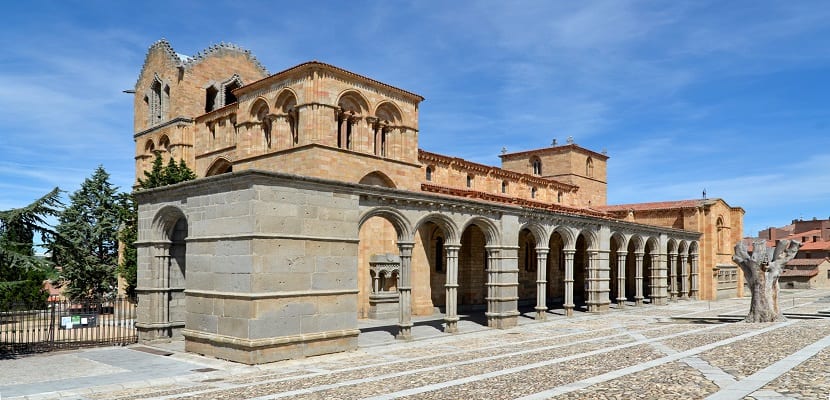
Image | Wikimedia
It is the most important Catholic temple after the Cathedral of Ávila and the largest in the Romanesque style in the city. According to tradition, the basilica was built in the place where the bodies of two martyrs of Christianity were deposited in the time of Diocletian.
It is the great example of Romanesque in Ávila that with its careful proportions and foreign influence is a unique example of Hispanic art in this style. Its construction began in the XNUMXth century and ended in the XNUMXth century. The Basilica of San Vicente has a Latin cross plan with three naves of six sections and a transept arm. It also has the peculiarity of having a Gothic clerestory on the side naves.
The best of Ávila's Romanesque sculpture are the historiated capitals of the main chapel, the western portal and the cenotaph of the saints in which the martyrdom of the saints Vicente, Cristeta and Sabina is related. The arcaded gallery of the Basilica of San Vicente was built in the XNUMXth century.
General admission to the Basilica of San Vicente is 2,30 euros while the reduced one is 2 euros. The visit is free on Sundays.
Convent and Museum of Santa Teresa

Image | Wikimedia
The city of Ávila and the figure of Santa Teresa de Jesús go hand in hand. This XNUMXth century Spanish nun and writer is considered one of the great teachers of Christian mysticism. The church that forms a joint with the Carmelite convent, an order that the saint founded, stands on her birthplace. Below is the current Teresian museum, the only one in the world to know his life, work and message.
Attached to the church the convent was built. From the temple we can contemplate its sober facade and interior typical of the Carmelite style. Inside we find works by the great Gregorio Fernández such as the Christ tied to the column. Regarding the convent, at present it is the residence of a community of Discalced Carmelites and a hostel for pilgrims.
Town Hall and Mercado Chico square
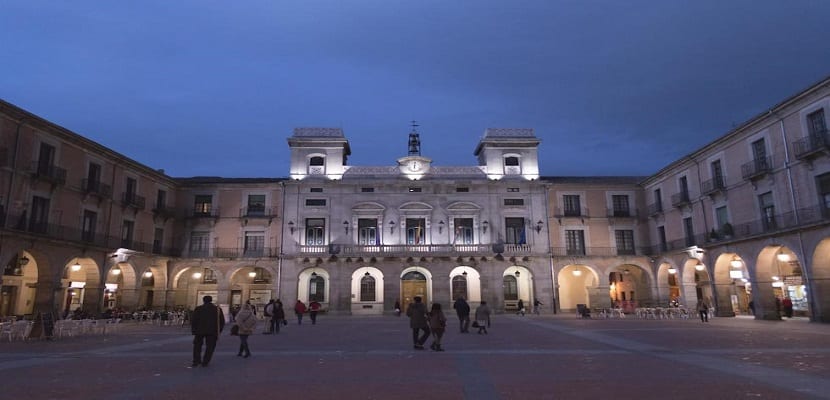
Image | Marcos Ortega on Minube
The Mercado Chico square is the main square of Ávila, the nerve center of the city. In it we can find the Town Hall and the church of San Juan Bautista. The origins of the square date back to the end of the XNUMXth century when Ávila began to repopulate while the roots of the Town Hall were found in the times of the Catholic Monarchs., who ordered the construction of a place for holding the Council meetings, which until then were held at the door of the church of San Juan, also integrated into the square.
Towards the XNUMXth century, the Mercado Chico square and the Town Hall were in a dilapidated state, so the Council began a restoration project to improve its appearance, giving rise to a regular square with arcades. In the middle of the XNUMXth century, the current Town Hall was built following an Elizabethan architectural style.
Sepharad Garden
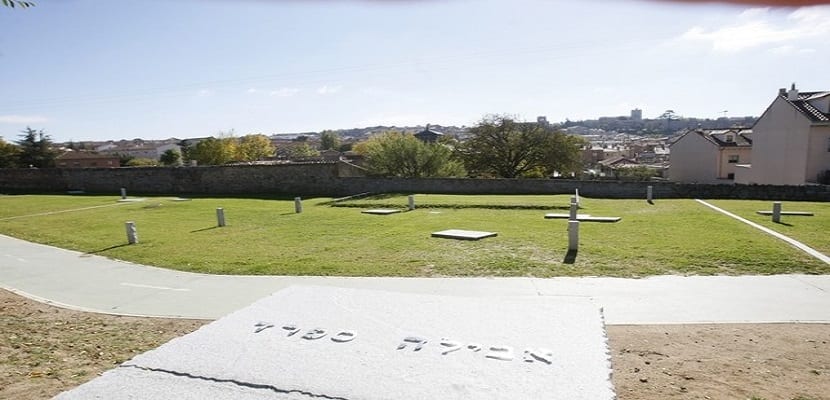
Image | Avila Diary
The presence of the Jewish community in Ávila dates back to the XNUMXth century with the first settlers, also Christians and Muslims. Ávila was a focus of intellectual and spiritual life, where an important Talmudic school flourished. In the years prior to the expulsion, under the reign of the Catholic Monarchs, the aljama of Ávila was the largest in the kingdom of Castile and many synagogues shared the urban space with temples of other faiths.
In the grounds located behind the Convent of the Incarnation, a large number of Jewish funeral structures were discovered in 2012 due to works, who buried their dead in this space between the XNUMXth and XNUMXth centuries.
The Garden of Sefarad is a tribute to the presence of the Sephardim in medieval Spain. In the center of these gardens there is a burial mound in which the remains extracted from the excavated tombs were deposited. An outdoor space for reflection and enjoyment of good weather.
These are some of the places to see in Avila in one day. However, a more detailed visit will allow us to know the soul of this Castilian-Leonese city, although these six places are a good way to start. If you have some time left, you can go to the Royal Monastery of Santo Tomás, the Serrano Palace, the Bracamonte Palace, the Torreón de los Guzmanes or the Humilladero Hermitage, among many other emblematic places in Ávila.